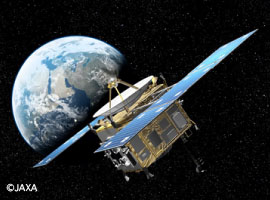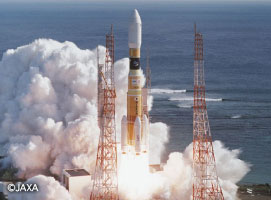Benefits for businesses
A Rich History of Space Development
Space projects provide infrastructure that is essential for protecting national security as well as improving our daily lives.
Japan launched its first satellite, “Ohsumi”, in 1966, becoming the fourth country in the world to launch a domestically developed satellite with a domestically developed rocket. Later, in 1977, Japan successfully launched a geostationary satellite, which it has since followed with weather satellites, telecommunications and broadcasting satellites, quasi-zenith satellite systems, earth observation satellites, remote sensing satellites, planetary exploration satellites, and so on, all collecting valuable scientific data. In particular, the planetary exploration craft “Hayabusa” achieved success on a global scale when it was launched in July 2003 to land on the asteroid Itokawa in November 2005. It traveled a distance of 6 billion kilometers from Earth and then returned to Japan with samples of asteroid material in June 2010.
Japan also developed and operated various rocket launch systems for space development and use. Its liquid-fuel rockets include the H-II rocket, which has achieved a globally competitive 95% success rate, and its solid-fuel rockets include M-V rockets, among the largest of such launch systems in the world. In September 2009 and January 2011, Japan also successfully launched H-IIB rockets carrying unmanned H-II transfer vehicles (HTV) that fulfilled crucial roles in resupply of the International Space Station.
JA2012 will introduce examples like these of Japan's space technology as well as the history and future prospects of the space industry in Japan.


